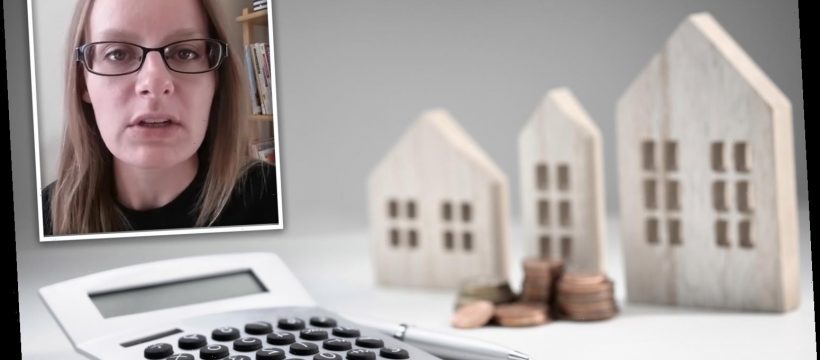A THRIFTY single mom-of-two has revealed how she was able to buy a $60,000 house with only $20,000 income.
Katie is sharing her secrets after purchasing her family home with zero downpayment, and claims she’s made substantial equity on the property through renovations that the bank also funded.
Katie, who shares her story of success through a ‘Raising Wildflowers’ YouTube account, is a self-described “unschooling mom of two kiddos in their teen and pre-teen years” living a “frugal” life through careful and ethical budgeting.
Katie explains that in 2010, when she was in her early twenties she made just $20,000 income.
With high prices across the country, the single mom decided it “made more sense to buy a house” – even without a deposit.
She explains: “When you go to apply for a loan, banks will look for three things – income, debt to income ratio and your credit score.”
Because Katie's income was so low, she did not qualify for a traditional home loan – but she did qualify for an FHA loan.
FHA loans are a mortgage that is insured by the Federal Housing Administration (FHA) and issued by an FHA-approved lender.
FHA loans are designed for low-to-moderate-income borrowers; they require a lower minimum down payment and lower credit scores than many conventional loans.
Katie explains: “It’s for people who have a lower income or credit score or haven’t had great credit or financial situations in the past, but have established themselves as improving their situation.”
The frugal mom says that order to qualify for the FHA loan, she needed to have a credit score of at least 580 – adding that you can have had a bankruptcy and foreclosure in the past but “have to have good reestablished credit.”
Katie goes on: “They are also going to look at your debit to income ratio – there’s two different types, front and back end.”
“Front end is your mortgage payment, including your insurance and property taxes. And that needs to be around 31%.”
“The back end includes all of your debt, including credit cards, student loans, car notes anything like that needs to be typically between 43-50%.”
The unschooling mom claims that the benefit of purchasing her home with an FHA loan is that the downpayment is usually a lot less than traditional loan – usually its around 3.5% but there are grants that will lower than even more – as Katie had a 0% down payment on her purchase.
She adds there is also an option to get a $2,000 – $3,000 renovation loan, which allows additional funds to make improvements to the house.
The value of the home isn’t calculated until after the renovations are complete.
Katie explains: “So if you purchase a house for $60,000 and after proposed renovations, the house is going to be valued at $100,000, you would be able to get a loan for $100,000 – if you qualified for a loan in that amount.”
It means you would then have $40,000 to spend on renovations.
In Katie’s specific situation, because she was such a low income earner, she was able to qualify for FHA due to her low debt to income ratio.
She explains: “I had no other debt when I went to go purchase my house so my debt to income ratio met the qualifications.”
“I also had a little bit of money in savings, so even though I didn’t have a downpayment, the bank liked to see that I had saved money – had a little bit of a cushion and was financially responsible enough to be able to save money.”
The frugal mom stresses to her viewers it’s “smart to have money saved because when you do own a home something might go wrong” – encouraging potential purchasers to have some savings whether or not the bank requires it.
Katie also explains she was better able to enter the homeowner market by buying her home when it was at foreclosure.
She says: "I got a really good deal on a house that looked pretty ugly initally.”
“I saw there was a lot of potential in it and I knew that after the renovations the house was going to be nice.”
“I got a really good deal on it because cosmetically it was pretty shabby.”
Katie says when she purchased her family home, she didn’t only look at it as a living space but also an investment property.
“Not only have I need living in the house for a few year but I’ve earned some equity. When you go to purchase a home, you consider it an investment and maybe you can earn a bit of money on it also.”
Katie swears by her purchasing method, saying she has “saved so much money” on rent and added value not only to her home, but her family’s life.
The Raising Wildflower mom doesn’t only share home-owning tips online, but documents her unschooling routine with her kids, and her budget-friendly life – spending just $80 a week on her vegan family’s meals, and how she manages to live on just $700-a-month by choice.
Raising Wildflowers has over 4,3700 subscribers and 429,546 views.
Source: Read Full Article




